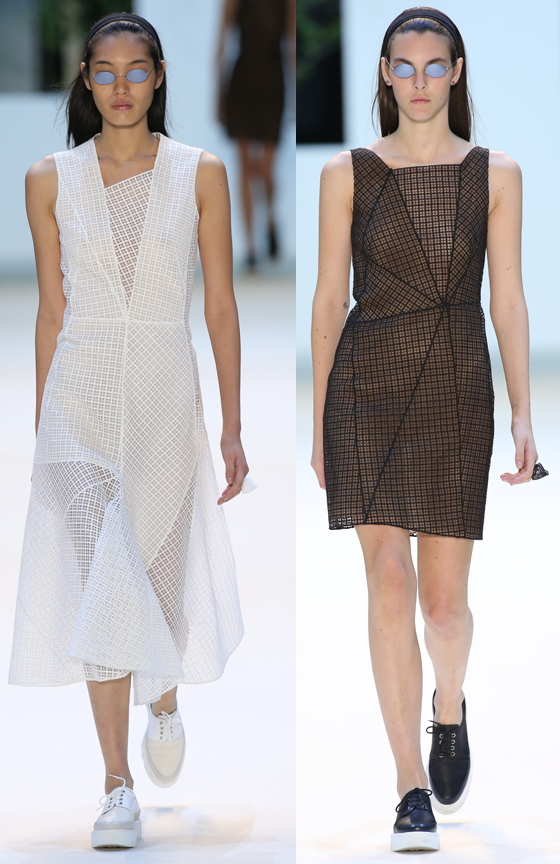Akris SS 2016
I have been admiring Sou Fujimoto’s work and his unique approach to architecture for quite some time.
We met through Iwan Baan, the photographer, earlier this year in Paris, where Sou Fujimoto is working on the new Paris-Saclay University.
In summer, we saw each other again in Tokyo after I spent time in Naoshima, where I discovered his delicate white pavilion in the harbor. It is a place to relax and a new architectural experience speaking to all senses. It looks like a diamond, beauti- ful during the day and wonderful at night and it inspired my 3D-printed rings.
There are architects whose vision is close to what fashion really is about – creating
a relation between the body and the environment that helps human beings to live comfortably. Sou is an architect who understands that we have more senses than just the eye.
In Sou’s work, I recognize a desire to comprehend and create volume, space and room, to intertwine nature and construction, to work with transparency and opaque- ness that rings familiar to me.
He is a great integrator and he is able to express a complex virtuosity with utmost simplicity and ease.
The Forest of Music is a Music Hall project in Budapest covered by a round molding roof with openings for trees to grow.
I was most inspired by his sketching always in red ink, his personal way of dressing – relaxed – and his glasses, the inspiration for the sunglasses in the show.
The Serpentine Gallery Pavilion of 2013, which was my first encounter with Sou Fujimoto’s architecture, the different blues of the Miami Design District facade, the Taiwan Towers project and the woods of his entry for the Sumida Museum for Hokusai or the complex simplicity of the Setonomori Houses and most prominently the House N – tonight, they all are in the Grand Palais.
– Albert Krimmer (creative director of Akris)





No Comment